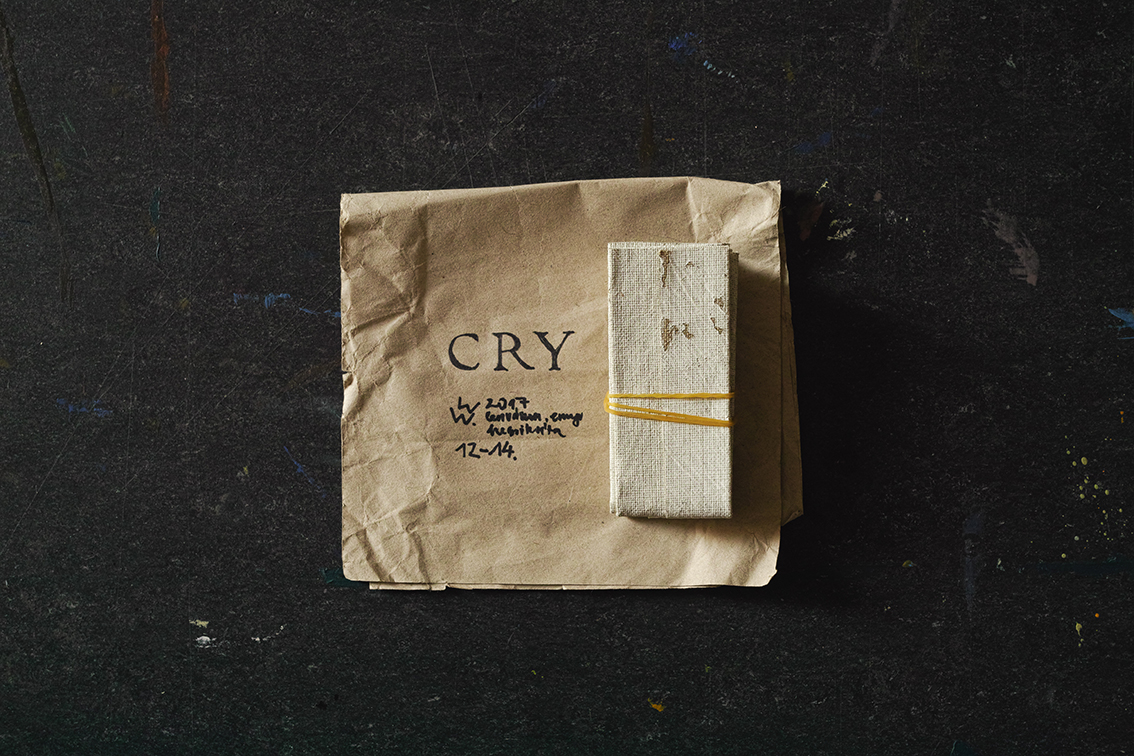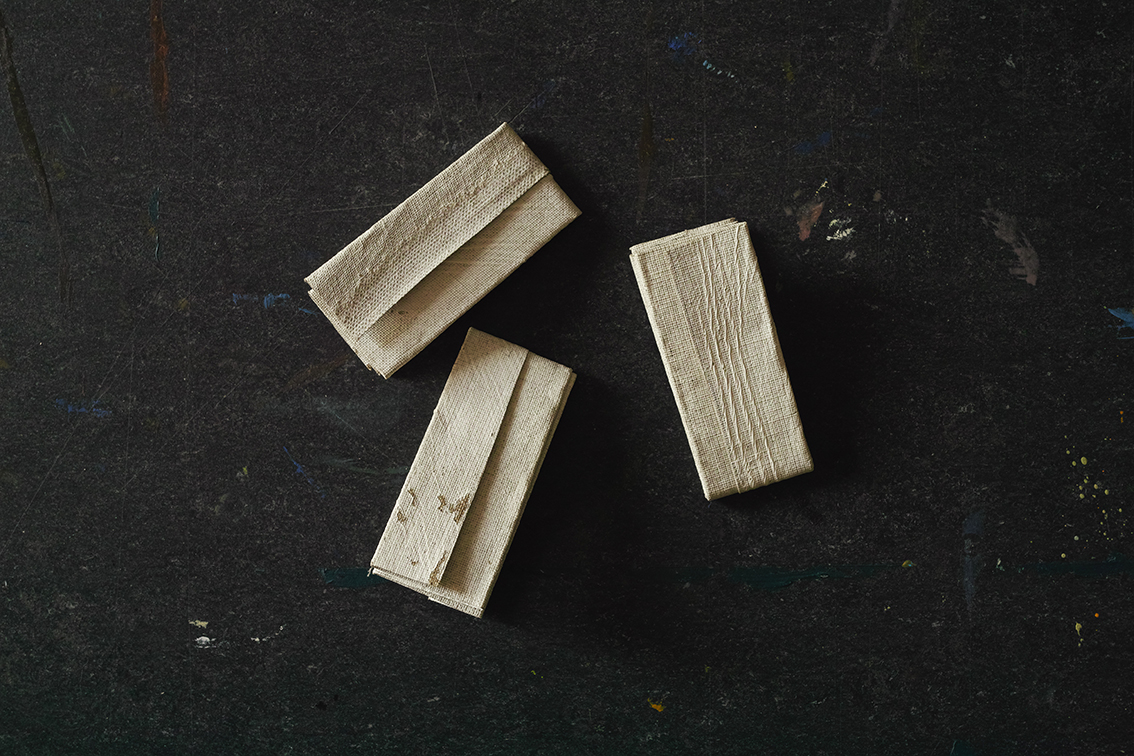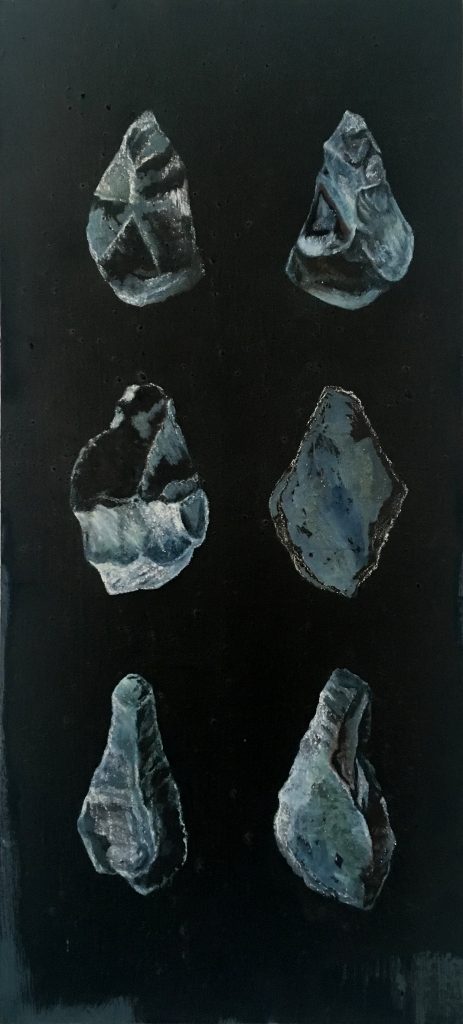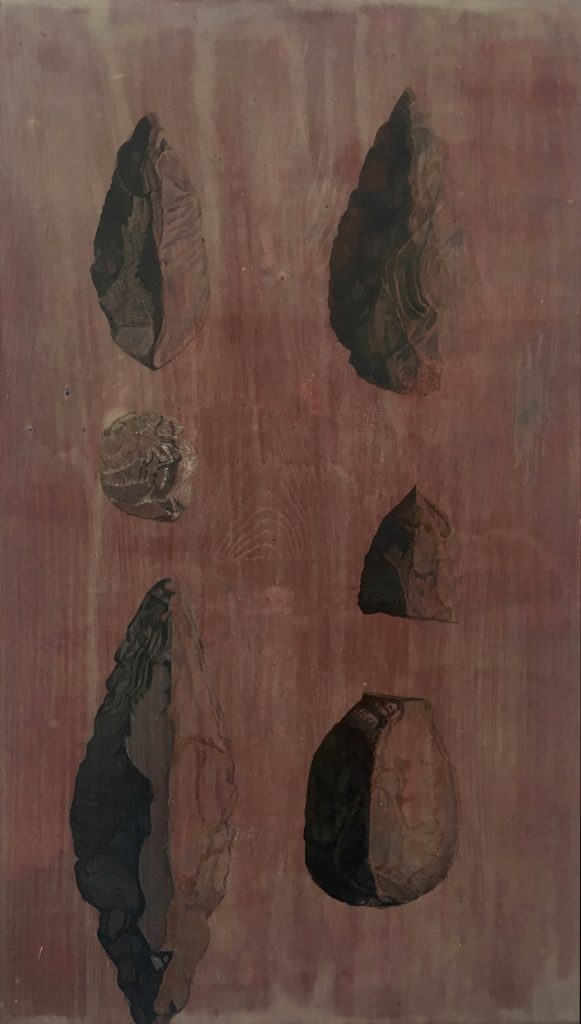HANDAXE ENIGMA
There is this long debate of the purpose of the beautiful hand axes that our ancestors made for over one and a half million years without changing the basic design. The oldest of them may date back about 1.8 million years.
Last summer I was reading Bill Bryson’s book the Short history of nearly everything and this is where I first read about the handaxe enigma. You see here in school we were told that handaxes (szakóca) were very useful tools and I had to be this old to learn that they were not used at all!
This is one of the reasons why handaxes made the scientists go puzzled. One of the other reasons is their beauty. You can read all the reasons here https://www.psychologytoday.com/intl/blog/how-think-neandertal/201504/the-handaxe-enigma
Last summer I was in the middle of making an installation: C R Y.


Just when I read the Bryson book. And as I was so much into the theme of crying I thought that these hand axes looked beautifully carved tears to me. I was just researching the purifying nature of crying, the feeling of relief that we often have when crying: as the Hungarian saying says: I am so relieved that I feel a big stone falling of my heart. This reminded me of the phrase that if a patient starts to cry you will know that you are a therapist as you provided someone with true safety, a strong shoulder: you were able to include someone else’s problems by excluding all your own stuff.
I started painting handaxes this fall and I called them Talált Könnyek (Tears Found).

Talált Könnyek/1 (Tears Found) 65×30 cm, linseed oil, pigment, chalk on wood 2018
https://en.wikipedia.org/wiki/File:Biface_Extension.png
And I read more about handaxes: “Kohn and Mithen independently arrived at the explanation that symmetric hand axes were favoured by sexual selection as fitness indicators.”
Finally I have found Dr Penny Spikins and her ‘trustworthy handaxe theory’! https://www.york.ac.uk/news-and-events/news/2012/research/handaxe/
Dr Spikins said: “Since their first recovery, the appealing form of handaxes and the difficulty of their manufacture have inspired much interest into the possible ‘meaning’ of these artefacts. Much of the debate has centered on claims that the attention to symmetrical form and the demonstration of skill would have played a key role in sexual selection, as they would have helped attract a mate eager to take advantage of a clear signal of advantageous genes.
“However, I propose that attention to form is much more about decisions who to trust; that it can be seen as a gesture of goodwill or trustworthiness to others. The attention to detail is about showing an ability to care about the final form, and by extension, people too.
“In addition, overcoming the significant frustrations of imposing form on stone displays considerable emotional self-control and patience, traits needed for strong and enduring relationships.”

Talált Könnyek/2 (Tears Found) 60×34 cm, linseed oil, pigment, chalk on wood 2018
As I was painting more and more of handaxes I realised that we have a living tradition that can be clearly related to the handaxes based on Dr Spikins theory. The engagement ring with its precious stone is the remnant of the handaxe carving tradition! The carefully polished gem is the contemporary metaphor of endurance, strength, trustworthiness.